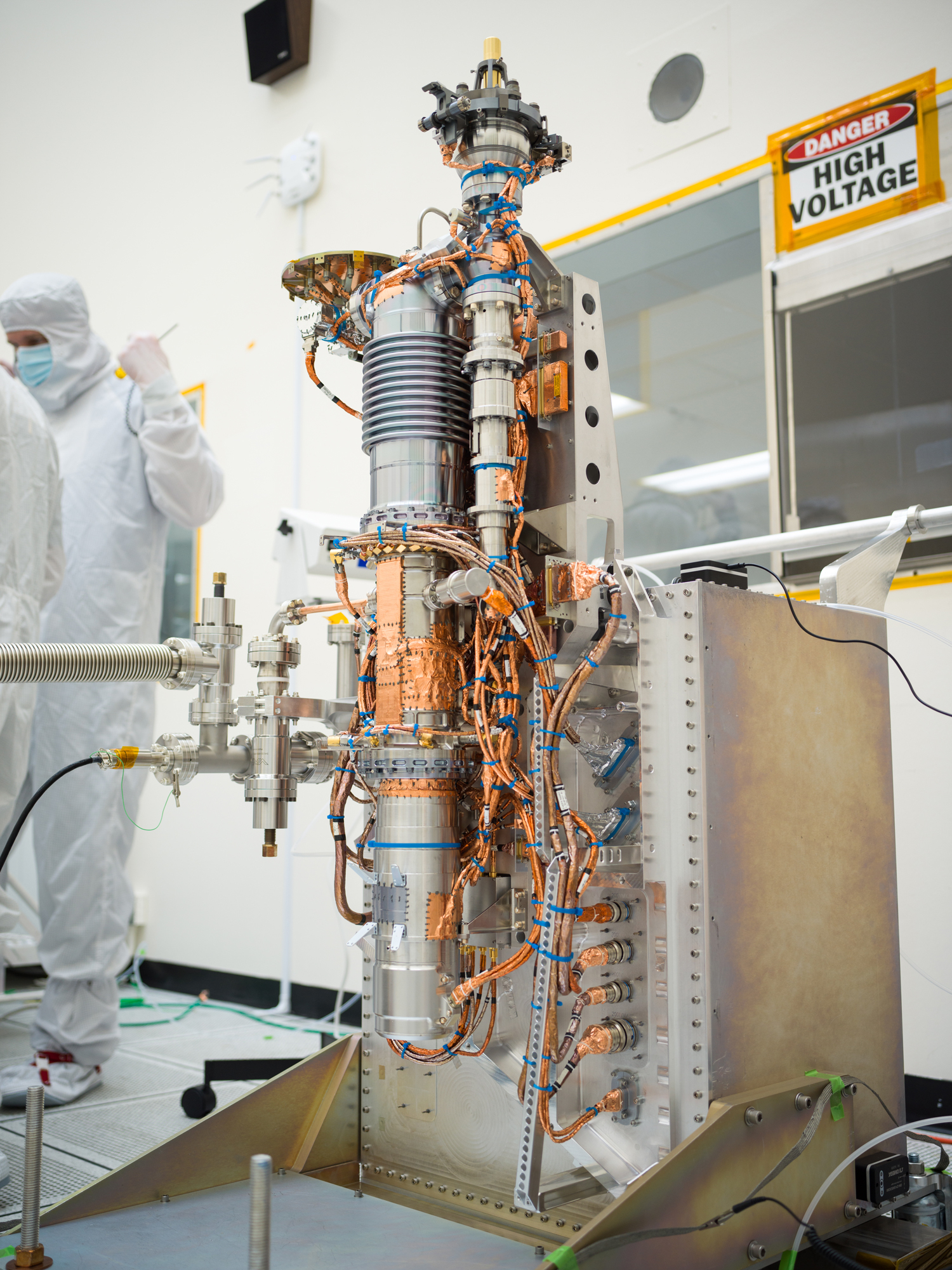All Resources
Europa Clipper's Mass Spectrometer Delivered to JPL

Europa Clipper’s MAss Spectrometer for Planetary EXploration/Europa, called MASPEX, is seen in a cleanroom at NASA’s Jet Propulsion Laboratory (JPL) in Southern California, following delivery of the instrument from Southwest Research Institute (SwRI). The instrument was delivered to JPL in December 2022.
The MAss Spectrometer for Planetary EXploration (MASPEX) instrument will be one of nine science instruments in the mission payload. MASPEX will analyze the gasses near Europa to understand the chemistry of Europa’s surface, atmosphere and suspected subsurface ocean. It will also study how Jupiter’s radiation alters Europa’s surface compounds and how its icy surface and subsurface ocean exchange material.
Once it arrives, Europa Clipper will orbit Jupiter and perform repeated close flybys of the icy moon. MASPEX works by taking in gas molecules from Europa and converting them into charged particles called ions. It bounces the ions (atoms and molecules missing an electron) up to 400 times back and forth within the instrument. By timing their transit through the instrument, MASPEX measures the mass of these ions, which reveals each molecule's identity which in turn helps to determine whether Europa is habitable.


